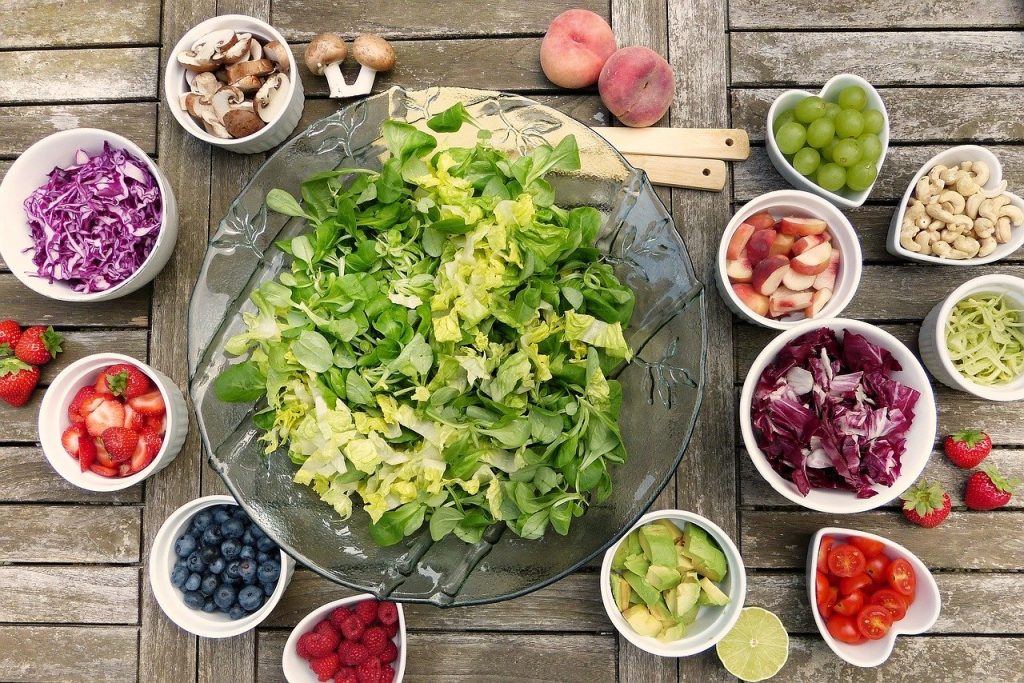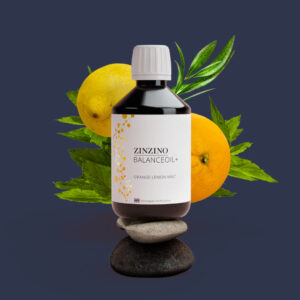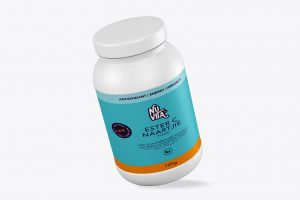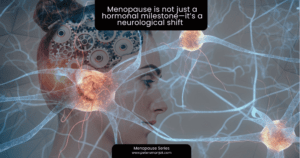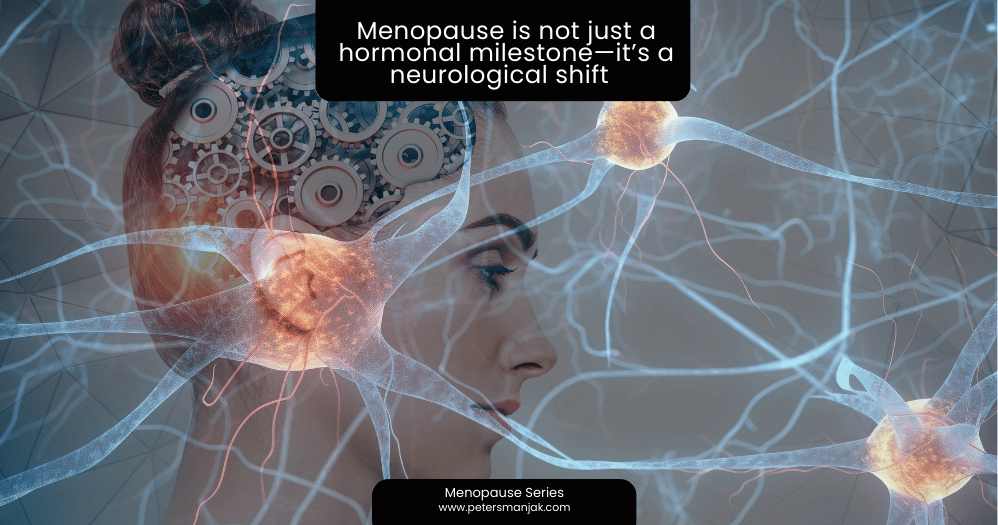Underlying causes to the majority of health conditions is a result of what we consume in the form of food and drink. In addition, lifestyle factors are vitally important. How we control and manage our thought patterns and mange stress will also expose us to serious health challenges.
Many people are uncertain what they can do to manage their chronic health conditions. The science can be confusing and complex, especially to those with autoimmune diseases, because these disorders can result in brain fog, fatigue, and loss of cognitive function that make it hard to figure out what to do next.

Autoimmune protocol (AIP) Basics
The autoimmune protocols available today are an effective way of consuming nutrient dense foods and adapting one’s lifestyle in order to promote healing and help individuals with autoimmune conditions to overcome the core underlying factors preventing recovery, including inflammation, leaky gut, hormone imbalances, blood sugar imbalances, micronutrient deficiencies, and immune system dysregulation.
The autoimmune protocol eating plan is an elimination and reintroduction protocol: For a time you eliminate foods that are known to drive inflammation and resulting symptoms, and then you reintroduce foods methodically to rule out reactivity. If you body has an ongoing intolerance to foods, it could be best to remove them completely. Wht would anyone wish to continue poisoining their body with a know poision?
One Man’s Meat is Another Man’s Poison
The optimal end result is an eating plan and lifestyle that support your health while avoiding factors that cause harm.
The guidelines provided here is stricter than what most practitioners would prescribe. To bring about speedy results as a practitioner, during my work in managing health risk and the research of wat has worked for other practitioners and the available studies, that a more direct approach is often necessary. The diet must be very basic and simple so as not to trigger inflammation in the intestines and further worsen leaky gut and autoimmune flare-ups.
The literature identifies nutritional and herbal compounds that can facilitate the gut-repair progress.
The autoimmune repair map focuses on key areas
In every autoimmune condition, there are several key problem areas that underlie symptoms. The autoimmune protocol seeks to address each of these, bringing the body back into balance so it can function properly.
- Gut health: Gut inflammation, gut dysbiosis (imbalances in gut bacteria), and a leaky gut lining contribute to poor absorption of nutrients and systemic inflammation that feeds the autoimmune response. In the diet, foods that irritate the gut lining are avoided, while foods that support gut health are included.
- Nutrient density: Every system in the body needs a wide array of nutrients to function at its best, including the immune system. Nutrient-dense foods are central to the diet, giving the body the tools it needs to heal deficiencies and support immune system function.
- Blood sugar balance: High and low blood sugar can lead to systemic inflammation, immune flares, hormonal imbalances, and compromised brain function. Supporting balanced blood sugar is critical for recovery from any inflammatory condition. The autoimmune diet gives you the tools to support healthy blood sugar balance.
- Immune system regulation: Inflammation, leaky gut, hormone imbalances, blood sugar imbalances, and micronutrient deficiencies all contribute to immune system dysregulation. By reducing bacterial overgrowth and inflammation in the gut, removing food-borne immune triggers from your diet, providing dense nutrition and supporting blood sugar regulation, the autoimmune diet helps to support healthy immune function.
Practical guidelines

These are good basic guidelines with which to start whether you are waiting to work with a practitioner or are going it alone:
- Focus on eating 7 servings of vegetables per day, including the full colour spectrum. The more colour the better. But also be aware of you own food intolerance to specific vegetables.
- Eat plenty of essential fatty acids (ideal omega-6 to omega-3 ratio is between 1:1 and 4:1).
- Teach you body to enjoy plenty of fermented foods to support healthy gut flora.
- Make sure you can distinguish between hunger and thirst. Allow yourself a sufficient amount of high quality vegetable fats and protein.
- If requird, eat frequently enough to avoid energy crashes caused by low blood sugar.
- Stay hydrated with plenty of fresh, filtered water.
- Strictly avoid foods on the “Foods to avoid” list. Cravings for these foods will pass quickly, especially as you start to feel and function better. Sometimes if you drin a glass of water or put a teaspoon of organic virgin coconut oil in your mouth to dissolve.
- Pay attention to keeping blood sugar stable and be aware of which foods trigger your symptoms.
- Mono-meals re also a great way to determine how every meal affects you.
- Elimination/Reintroduction: This protocol is intended as a elimination of certain foods to control inflammation and the immune response, then a reintroduction foods to determine food sensitivities and know the best foods for you. For more details on how to go about reintroduction, consider consulting with a functional practitioner or contact us for guidance.
Important daily lifestyle habits to support your healing
- Get enough sleep: Aim for 8 to 9 hours per night.
- Manage the stress response: Engage daily stress-reducing activities such as walking, meditation and relaxation.
- Exercise: Avoid over-exerting yourself. High-intensity interval training shows great benefits for dampening inflammation, however any sort of regular physical activity is better than none. The exception may be severely brain-compromised people whose symptoms are triggered by exercise; trial and error may be warranted to find what works for you.
- Maintain social connections: Many studies show that those who maintain healthy social connections are healthier, happier, and live longer. Laughter promotes serotonin, you happy hormone! Serotonin is your precursor t the sleep hormone, melatonin.
Foods to eat
When considering how to adapt you feeding schedule, you’ll be eating the way people ate for most of human history — there’s plenty of food that doesn’t come from a factory or an industrialised farm. Of course, if you have an intolerance to any of these foods, don’t eat it just because it’s on the list. Be sensible and listen to your body.
Most organic vegetables: Include as much variety as possible, making sure to include the full color spectrum; anise, arrugula, artichoke, asparagus, beets and their greens, bok choy, broccoli, cabbage, carrots, cauliflower, celery, chives, cucumbers, garlic, kale, kohlrabi, leeks, lettuce, mustard greens, olives, onions, parsley, radishes, rhubarb, shallots, spinach, squash, sweet potatoes, water chestnuts, watercress, zucchini, and more. Vegetables from the brassica family such as broccoli and kale.
If you have to eat meat, eat quality meats: beef, chicken, lamb, turkey, and wild game. Select hormone-free and antibiotic-free chicken, turkey, and lamb. Chicken has high Omega 6 content; eat in moderation, and if you consume more, also eat a lot of Omega 3 oils to compensate (see bottom of this section for proper ratios). Select beef that is grass fed, hormone free, and antibiotic free. Best choice are locally-raised grass-fed and pastured meats; second best is organic. Avoid factory-farmed meats that contain antibiotics and hormones. With any animal product, less is better.

Organ meats and offal: heart, liver, kidney, tongue, and bone broth. An important concentrated form of nutrients including vitamins, minerals, healthy fats, and essential amino acids.
Glycine-rich foods: Include foods containing connective tissue, organ meat, joints, skin, or bone broth.
Fish and shellfish: Seek out ocean-caught cold water, low mercury fish with high fat content. Swordfish, most tuna, and king mackerel are very high in mercury.
Quality fats: pasture-raised, grass-fed animal fats, fatty cold water fish, olive oil, avocado oil, coconut oil, low-mercury Omega 3 supplements.
Low glycemic organic fruits: apples, apricots, avocados, berries, cherries, grapefruit, lemons, peaches, pears, plums, etc.
Edible mushrooms: Mushrooms are generally fine for most individuals. However, some people with autoimmune conditions may react to immune-stimulating fungi such as Maitake and mushroom-derived beta-glucan, so monitor your response.
Probiotic and fermented foods: sauerkraut, kimchi, pickled ginger, fermented cucumbers, coconut yogurt (guar-gum free), kombucha, water kefir, coconut milk kefir, supplements, etc. You may need to make your own or buy one of the few brands that are genuinely fermented and free of sugars or additives. Also, search for information about anaerobic fermented foods in air-tight containers; these ferments do not produce histamines that some people react to (including rashes, digestive upset, inflammation) commonly found in aerobic, or open, ferments typically using mason jars.
Coconut: coconut aminos, coconut milk (guar gum free), coconut water and coconut water vinegar, coconut cream (not concentrate), and coconut oil. Whole coconut products (coconut butter, coconut cream concentrate, coconut flakes and chips, unsweetened coconut yogurt, fresh coconut) have high inulin fiber and moderately high phytic acid, which causes some individuals digestive issues — consume in moderation until you know your tolerance level.
Noodles: Shirataki yam noodles (sold in Asian grocery stores and some natural food stores) are fine, but avoid the noodles that contain tofu (soy).
Herbs and spices: basil, cilantro, cinnamon, coriander, clove, garlic, ginger, horseradish, lemongrass, mace, mint, oregano, parsley, rosemary, sage, saffron, sea salt, thyme, turmeric (black pepper is considered a reintroduction item). Avoid iodized salt unless you are deficient in iodine.
Vinegars: apple cider, balsamic, champagne, coconut, red wine, sherry, ume plum, white wine. Avoid grain-based vinegars: rice and distilled white.
Teas: black, green white, yerba mate (avoid caffeine if you have adrenal fatigue).
Other: herbal teas, carob, rooibos tea, deglycyrrhizinated licorice (DGL) (but not whole licorice root), vanilla extract (if cooked). In moderation: fructose (in fruit and starchy vegetables), pomegranate molasses. Very occasionally: maple syrup and maple sugar, honey, dried fruit, dates and date sugar, molasses, unrefined cane sugar (sucanat, evaporated cane juice, muscovado). Each person has unique tolerance to sugars — monitor your response.
Grey areas depending on individual sensitivities: legumes with edible pods (green beans, snow peas). Whole bean coffee in moderation (caution: many instant coffees show gluten contamination). Sugars: Some people have strong reactions to even small amounts of sugars; monitor your response. Seaweeds (high in iodine): Some people with Hashimoto’s may not do well with additional iodine in the diet.
A note on fatty acids: Consuming a proper ratio of omega-6 to omega-3 fatty acids is key for minimizing inflammation in the body. Too much omega-6 is highly inflammatory, so it’s important to get enough omega-3 (anti-inflammatory) to compensate. The average American ratio is close to 25 parts omega-6 to 1 part omega-3, resulting in high levels of inflammation. Researchers recommend a ratio of omega-6 to omega-3 fatty acids that ranges from 1:1 to 4:1 for optimal health and prevention of disease.
Foods to generally avoid in autoimmune gut repair
- Grains: barley, bulgur, corn, couscous, kamut, millet, oats, rice, rye, spelt, wheat, wheat germ.
- Pseudograins: amaranth, buckwheat, chia, quinoa.
- Beans and legumes: black beans, lentils, peanuts, peas, pinto beans, etc., and all soy products (edamame, miso, soy milk, soy protein, soy sauce, tempeh, tofu, soy lecithin, peanut, etc.).
- Nuts: all nuts and nut butters including peanuts (actually a legume).
- Seeds: chia, cocoa, flax, sesame, sunflower, instant coffee (many brands tested for gluten contamination).
- Seed-based spices: anise, annatto, celery seed, coriander, cumin, fennel, fenugreek, mustard, nutmeg, poppy seed, sesame, allspice, star anise, caraway, cardamom, juniper, peppercorns, sumac, whole vanilla bean.
- Dairy: butter, cheese, cow milk, creams, frozen desserts, goat milk, margarine, mayonnaise, sheep milk, whey, yogurt (coconut yogurt free of guar gum is acceptable).
- Eggs: During reintroduction, introduce yolks and whites separately, yolks first.
- Nightshades: eggplant, goji berries, sweet and hot peppers, hot pepper sauces, tomatillos, tomatoes, and potatoes (sweet potatoes and yams are okay — not in the same family).
- Nightshade-based spices: cayenne, chili powder, paprika, red pepper, curry, and spice blends that contain these
- Medicinal mushrooms: Some people with autoimmune conditions may react to immune-stimulating fungi such as Maitake and mushroom-derived beta-glucan, so monitor your response.
- Refined and processed oils: including vegetable oils.
- Sugars: agave, candy, chocolate, corn syrup, high fructose corn syrup, sucrose, etc.
- Stevia and non-nutritive sweeteners: acesulfame potassium, aspartame, neotame, and sucralose.
- Emulsifiers, thickeners, and other food additives: guar gum, carrageenan, zanthan gum, cellulose gum, soy lecithin.
- Alcohol: all alcohol.
- Gluten-containing compounds: barbecue sauce, binders, bouillon, brewer’s yeast, cold cuts, condiments, emulsifiers, fillers, chewing gum, hot dogs, hydrolyzed plant and vegetable protein, ketchup, soy sauce, lunch meats, malt and malt flavoring, malt vinegar, matzo, meat glue, modified food starch, monosodium glutamate, nondairy creamer, processed salad dressings, seitan, some spice mixtures, stabilizers, teriyaki sauce, textured vegetable protein. Beware of non-specific ingredients like “natural flavorings” or “spices”.
- Potential gluten cross-reactive foods: dairy, oats, yeast (brewer’s, baker’s, nutritional) instant coffee, milk chocolate, millet, soy, corn, rice, potato. Cyrex Labs offers a good cross-reactivity test.
- NSAIDS: non-steroidal anti-inflammatory drugs such as aspirin and ibuprofen.
- Other: canned foods, processed foods, wheat grass (contains wheat germ agglutinin), barley grass, brown rice protein, pea protein, hemp protein, licorice root (DGL is okay), aloe, slippery elm bark, commercial egg replacers, supplements containing ashwagandha (a nightshade) or oat seed, immune stimulants such as chlorella and spirulina.
Elimination and reintroduction of foods
The autoimmune protocol diet is an elimination and reintroduction protocol: For a time you eliminate foods that are known to drive inflammation and resulting symptoms, and then you reintroduce foods methodically to rule out reactivity.
Everyone asks how long the elimination phase might take, because nobody likes to make major changes in their habits. Timing on reintroductions depends on the individual. A good rule of thumb is to wait for reintroductions until you notice a marked improvement in your symptoms and quality of life; for some that’s 30 days, for others it’s months or even a year.
It may take time to unwind the self-perpetuating inflammatory cycles that lie beneath your symptoms, and it’s important to not rush into reintroductions. If you begin reintroductions while you are still highly symptomatic you will not be able to gauge whether or not a reintroduced food is causing a reaction and you’ll need to start over again.
Your stress level, sleep quality, exercise level, nutrient intake, genetics, food intolerances and underlying health issues will affect your reactions to foods. This affects when you can start reintroductions, and also means as your status with these factors improves over time, you may be able to reintroduce certain foods that previously tested as reactive.
Sometimes, one successfully reintroduces a food, then symptoms start to return. If this happens to you, it may mean you need to stay away from a food you thought was a good addition, until a later date or even permanently.
Summary of reintroduction rules
- Select the food to reintroduce. Plan to eat it two to three times in one day.
- The first time you consume it, eat half a teaspoon or less. Wait fifteen minutes.
- If you experience immediate symptoms, do not consume the food again.
- If you have no immediate symptoms, eat one teaspoon of the food. Wait fifteen minutes, monitoring for symptoms.
- If you have no immediate symptoms, eat a slightly larger bite.
- Wait two to three hours and monitor for symptoms.
- If you had no symptoms, eat a normal sized portion, either by itself or with a meal.
- Do not eat that food again for three to seven days, and do not reintroduce any other new or suspect foods during that time. Monitor for symptoms.
- If you have no symptoms in the three to seven day period, that food is potentially safe for you to eat.
- To confirm that food, eat a bit of it every day for another week, and monitory closely for reactions. Food reactions typically come in two forms; a strong reaction that leaves no doubt, and a slower inflammatory response that builds slowly to become noticeable later. If you have no reaction after this week, you may add this food back into your diet. You may now move on to your next food reintroduction.
Symptoms can be represented by any change; digestive upset, mood changes, fatigue, pain, sleep issues, brain fog, skin rash, etc.
IMPORTANT: If you have a reaction to a food reintroduction, you must wait until those symptoms are completely gone before moving on to the next reintroduction.
General order of food reintroductions
Some foods are more likely cause a reaction than others. It’s best to reintroduce foods lowest on that list first, ending with the most-likely items. If you have had food sensitivity testing done, leave any foods you have a diagnosed sensitivity for until the end of reintroductions. A general order of reintroduction is:
Egg
Egg yolks first: Most people tolerate the yolks well; intolerance is more common to the whites. Research shows soy protein is transferred to eggs; soy is a common chicken feed, so if you are intolerant to soy, you may find soy-fed chicken eggs are reactive for you.
Seeds before nuts
Introduce one item at a time, not mixed: seed-based spices (no nightshades), oils, butters, flours; raw nuts (soaked); toasted (beware store-bought seeds roasted in non-compliant oils); cocoa; coffee (in moderation).
Dairy
Grass-fed ghee then butter; raw goat yogurt/kefir, milk, cheese; raw cow dairy in the same order. Why raw, why this order? Raw dairy has live enzymes that make it easier to digest. Dairy has three components; butterfat, lactose and casein. Butterfat doesn’t cause a problem for many people; intolerance is more common for lactose and casein. Therefore ghee and butter come first. Goat dairy is easier to digest than cow dairy.
Nightshades
These come last because they are the most common food intolerance for those with autoimmune conditions, and if you have an inflammatory reaction, it takes longer to calm down and continue with reintroductions. Be sure to reintroduce one vegetable at a time. You might react to all, or only to some.
Consider never consuming
Tomatoes
NSAIDS (they disrupt gut health)
Grains/Gluten (most reactivity is related to molecular mimicry).
Reintroduction of other foods depends on your individual health history and needs.
Lectins in grains and legumes
Grains and legumes are high in proteins called lectins. Lectins have been shown to degrade the intestinal barrier, adding to leaky gut. They can also be transported through the damaged intestinal wall into the bloodstream, where they may bind to insulin receptors and leptin receptors. Some believe lectins may also have the ability to desensitize these receptors, thus contributing to insulin resistance and leptin resistance.
When transported through the gut wall into the blood stream, leptins can also set off an immune reaction that further damages the intestinal wall and sets off systemic inflammation, further supporting the autoimmune reaction.
Molecular mimicry: some foods can cross-react with gluten
Grains, legumes and some other foods present problems for other reasons. Research has shown that many gluten-intolerant people cross-react with other foods. In other words, their body erroneously recognizes other foods as gluten and reacts with an immune response that destroys not only the food proteins, but bodily tissue.
Not surprisingly, most grains fall into the category of top 24 foods most often to cause cross-reactivity, including amaranth and quinoa.
Other common cross-reactive foods include dairy, chocolate, sesame,and instant coffee. Fortunately it is now possible to test which foods might be provoking a cross-reaction to gluten, which you can read about here.
Corn
I tell all my gluten-free patients to avoid corn, even though this contradicts the advice on many gluten-free websites. The protein in corn is similar enough to that in wheat and wheat-like grains that it can provoke an immune response. Also, corn has been bred over the years to resist pests. Unfortunately this bred into corn a compound called fucosamine, which is carcinogenic.
Seeds and nuts
Tree nuts are one of the top allergens and food sensitivities. Leaky gut is exceedingly common in autoimmune patients, and it increases the likelihood of developing food allergies and sensitivities. By removing seeds and nuts from the diet during elimination phase, one is better able to determine if a sensitivity exists.
In addition, the fiber in nuts and seeds can contribute to gut irritation.
Nightshades
Nighshades contain digestion-resistant and gut-irritating lectins, saponins, and capsaicin (a steroidal stimulant) that can contribute to leaky gut, as well as pass through the gut lining and contribute to systemic inflammation and immune reactivity.
Addressing subconscious beliefs about food
For those battling a history of weight issues or an eating disorder, this diet can be filled with emotional triggers. In these cases it is highly recommended that support for underlying subconscious beliefs about food, eating, and your body is included. Ideas include hypnotherapy, emotional freedom technique (EFT) workshops or instruction, guided meditations and visualisations.
Subconscious beliefs aside, many are pleasantly surprised to find cravings and obsessions with food diminish or disappear once they remove immune reactive foods, stabilize blood sugar, and eat a nutrient-dense diet.
Many embarking on this diet are entering new territories of food. You may need to shop at different stores or order things online. I have supplied a list of popular sources on the resource page.
To learn more about why these foods are so important to include or avoid, please see my The health Your Gut course.
Autoimmune nutritional resources and ongoing support

The autoimmune protocol can seem daunting at first, and planning is essential to success. Fortunately, ample support exists on the internet today for a eating plans such as this. There are online “communities” for many variations of ‘diets’ including paleo, primal, GAPS, SCD, and AIP.
You must have the right foods on hand at all times; it’s helpful to batch cook so you have meals at hand and are not tempted to fall ‘off the wagon’. Thankfully, there are now plenty of great websites that offer recipes compliant with the autoimmune diet, also called the Autoimmune Protocol or AIP.
This dietary and lifestyle protocol is powerful on its own, however to boost the repair and recovery effects, please work with a qualified functional healthcare practitioner who understand and work with the connections between gut health and the brain, immune system, and endocrine system. He or she can provide you with proven nutritional compounds that have been shown to significantly aid the process of repair and recovery and unwind self-perpetuating inflammatory cycles in the gut and body.

